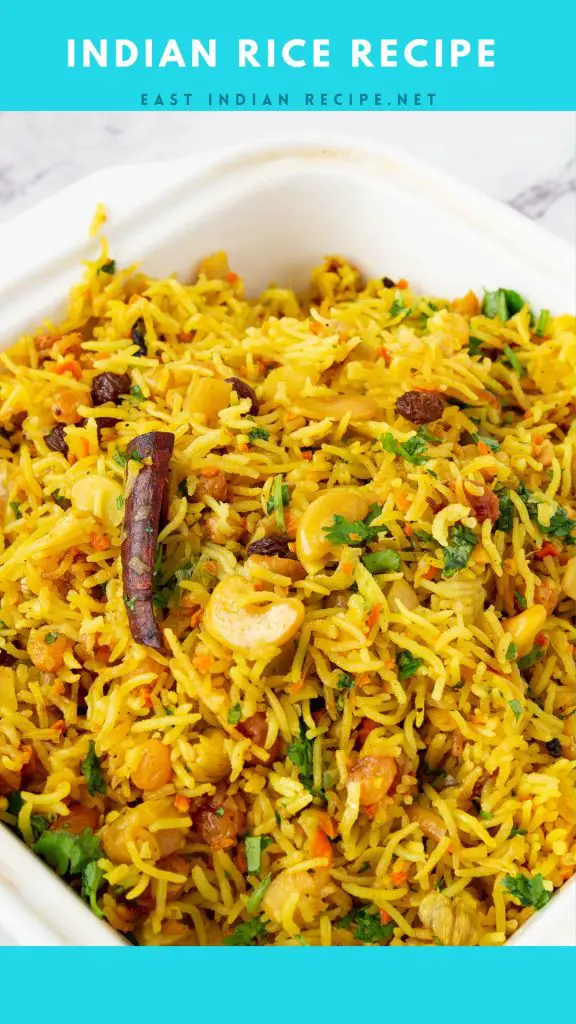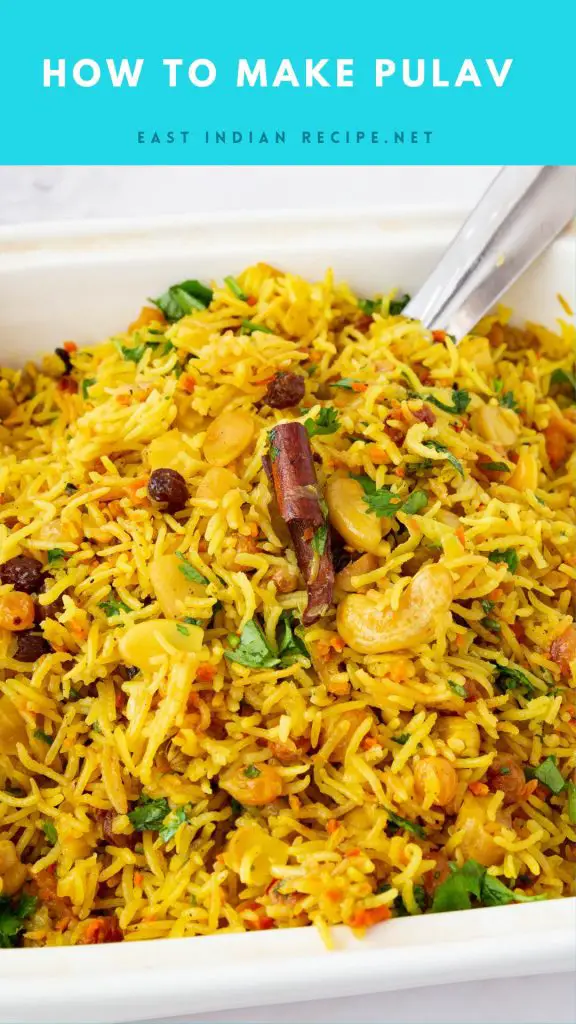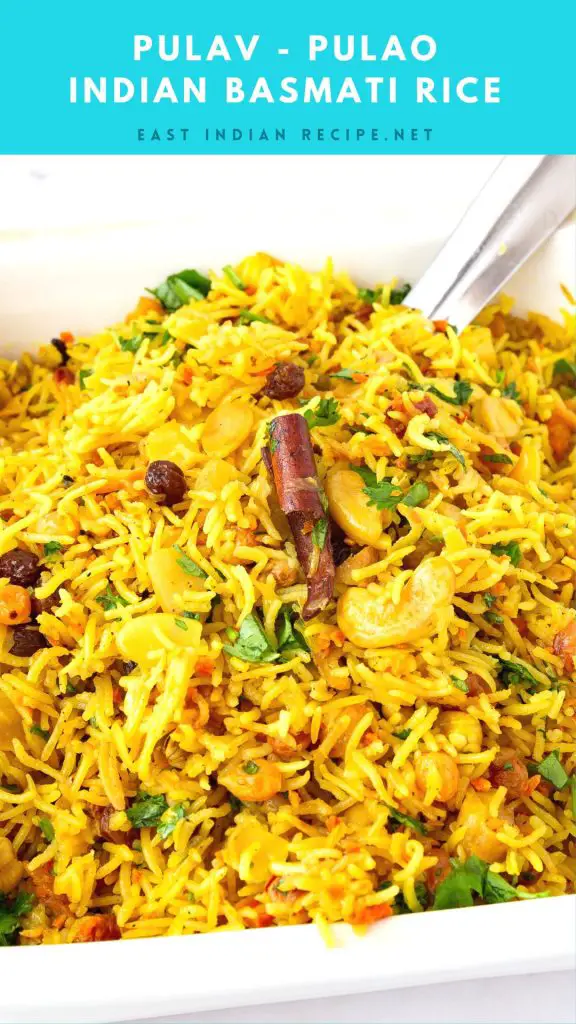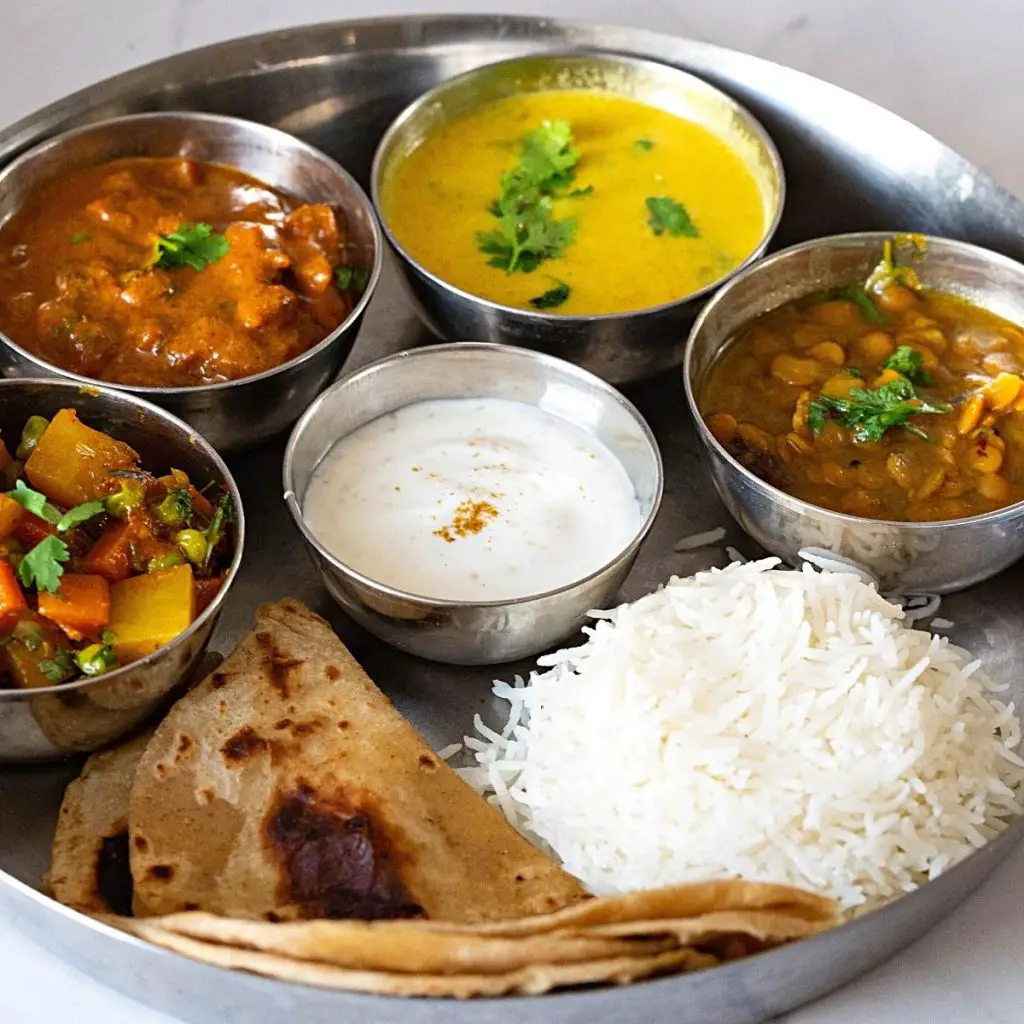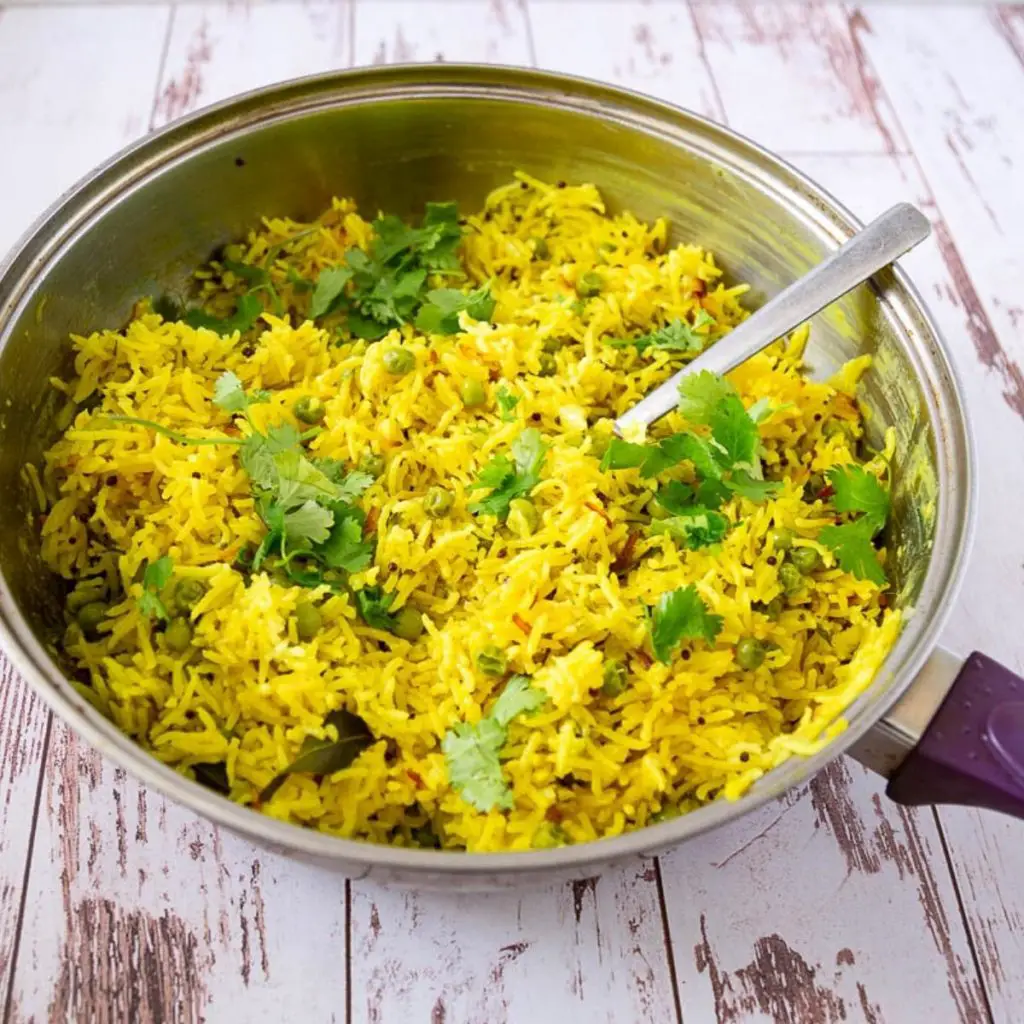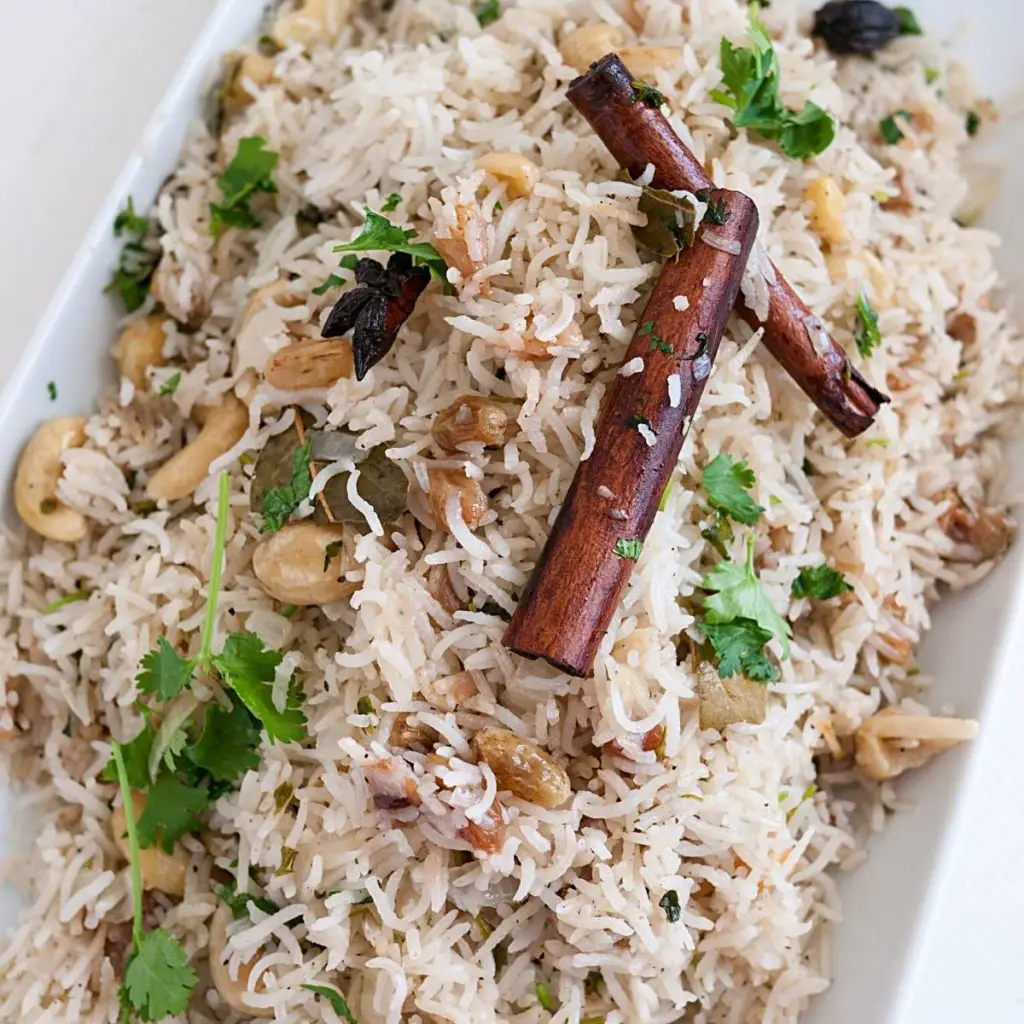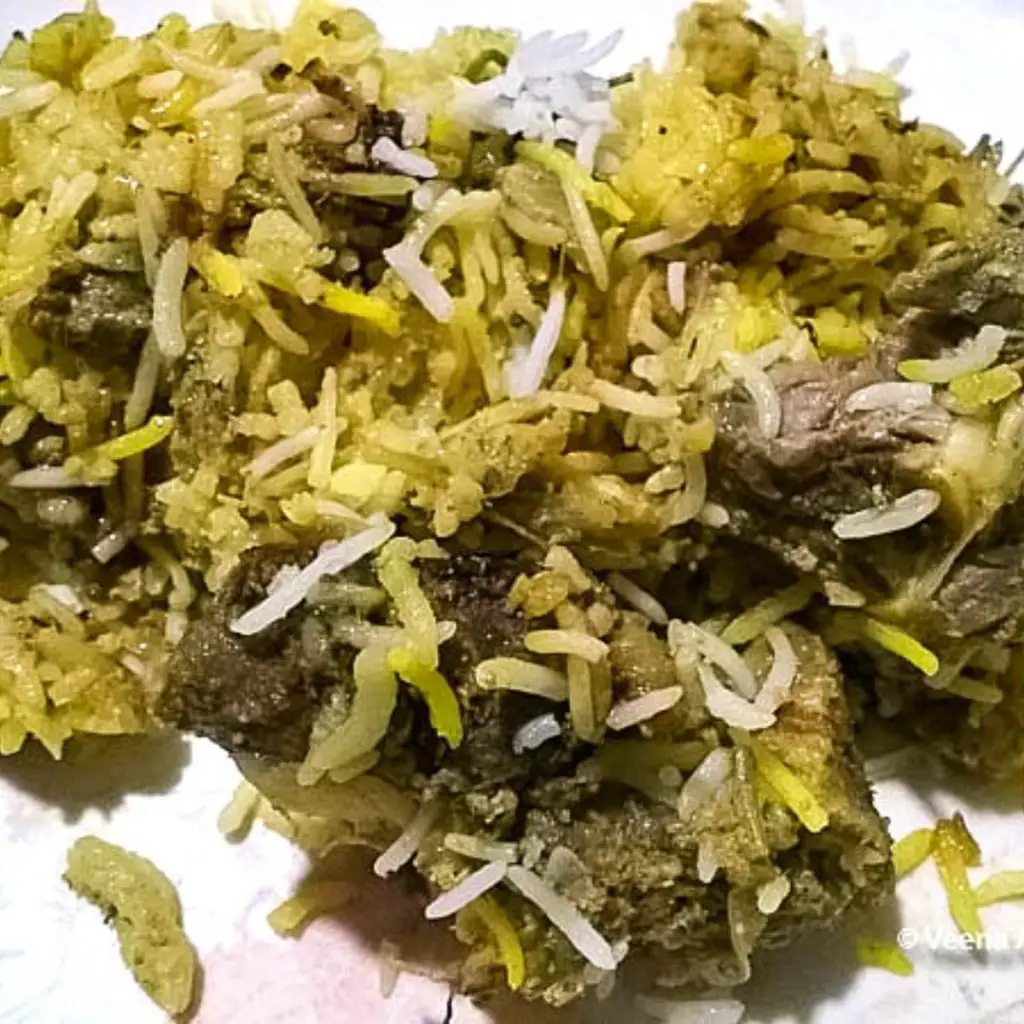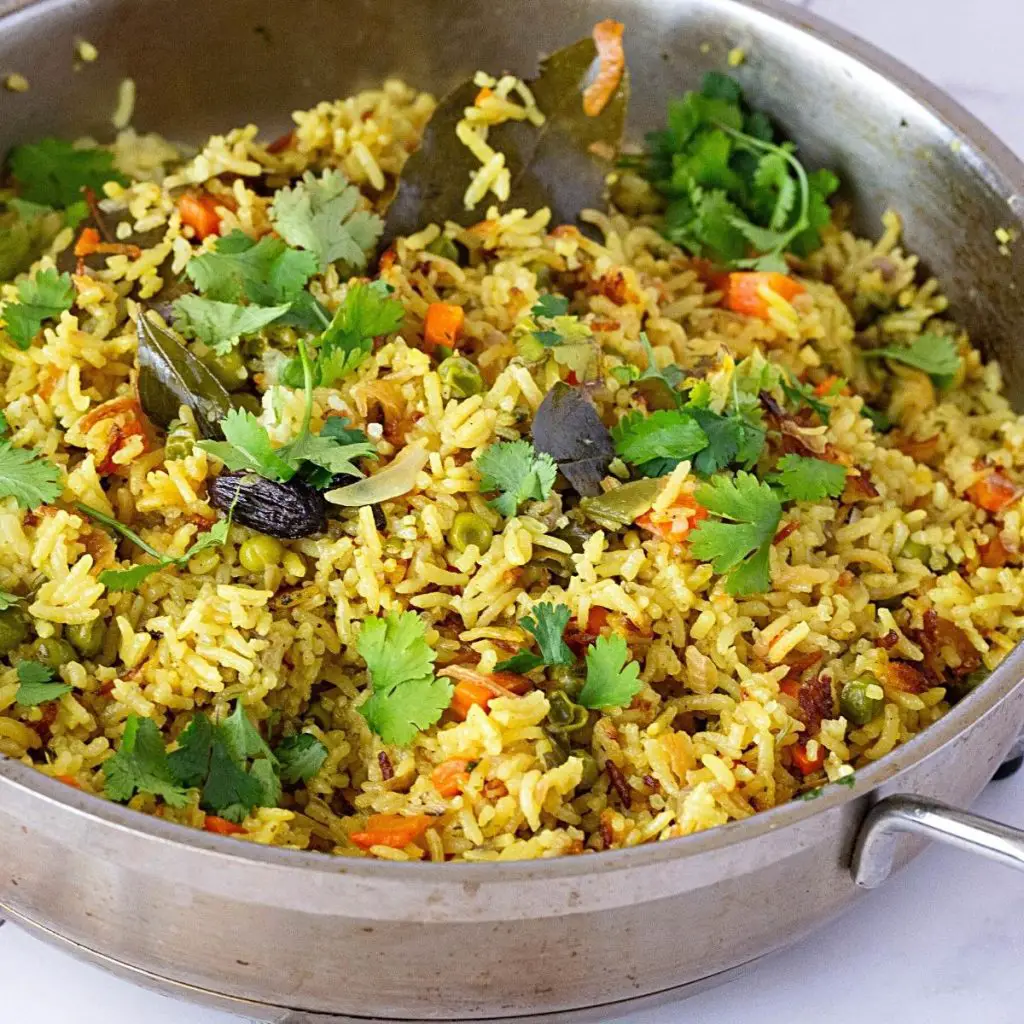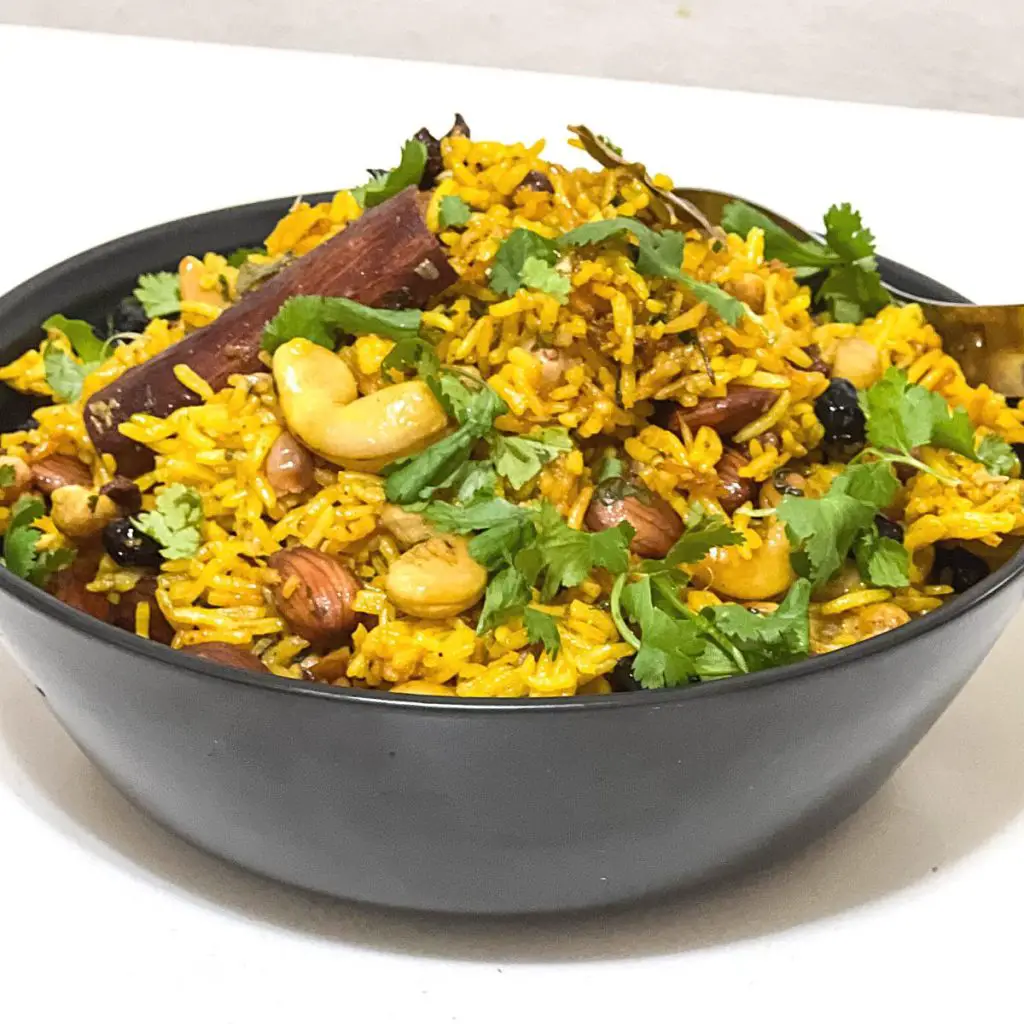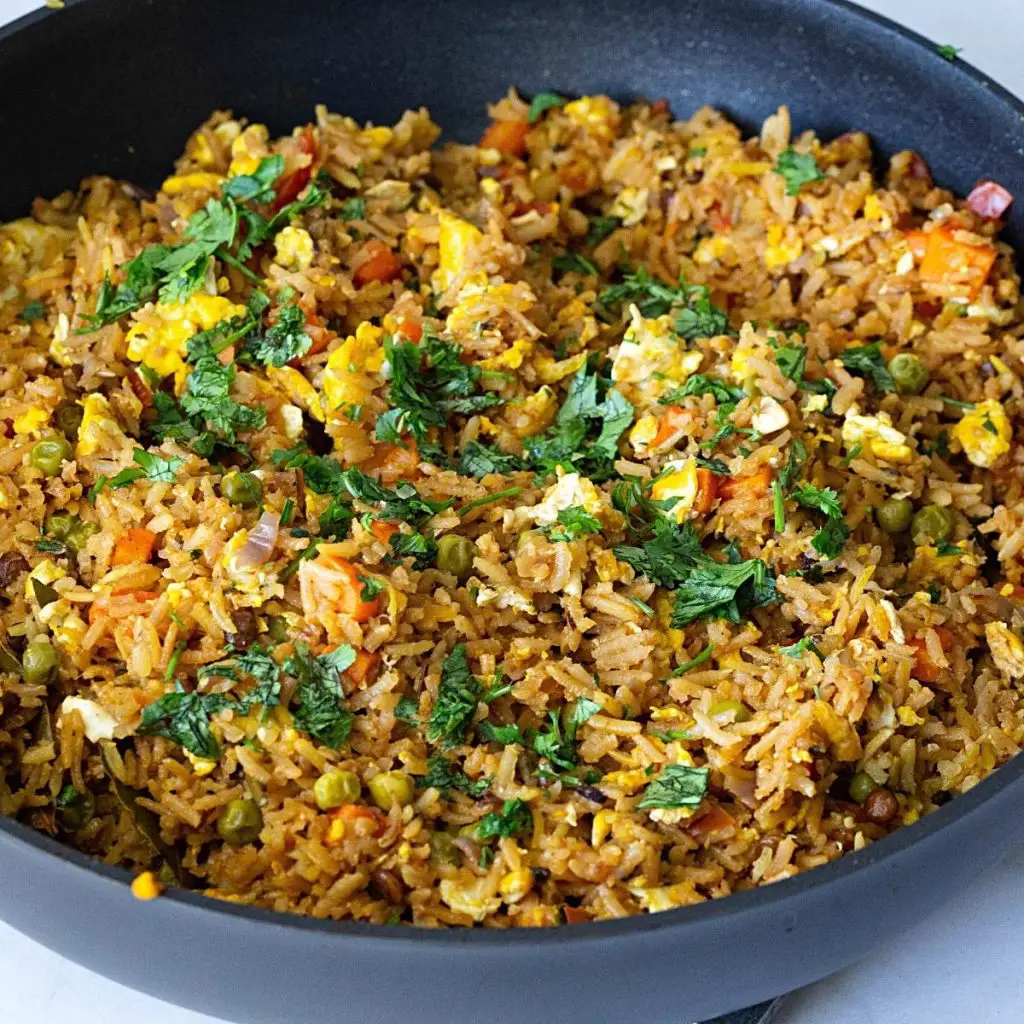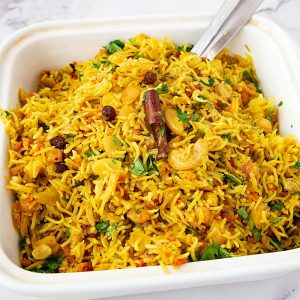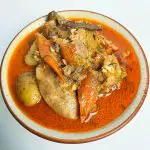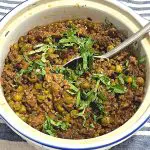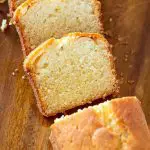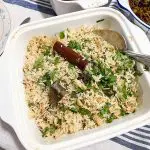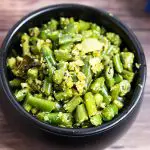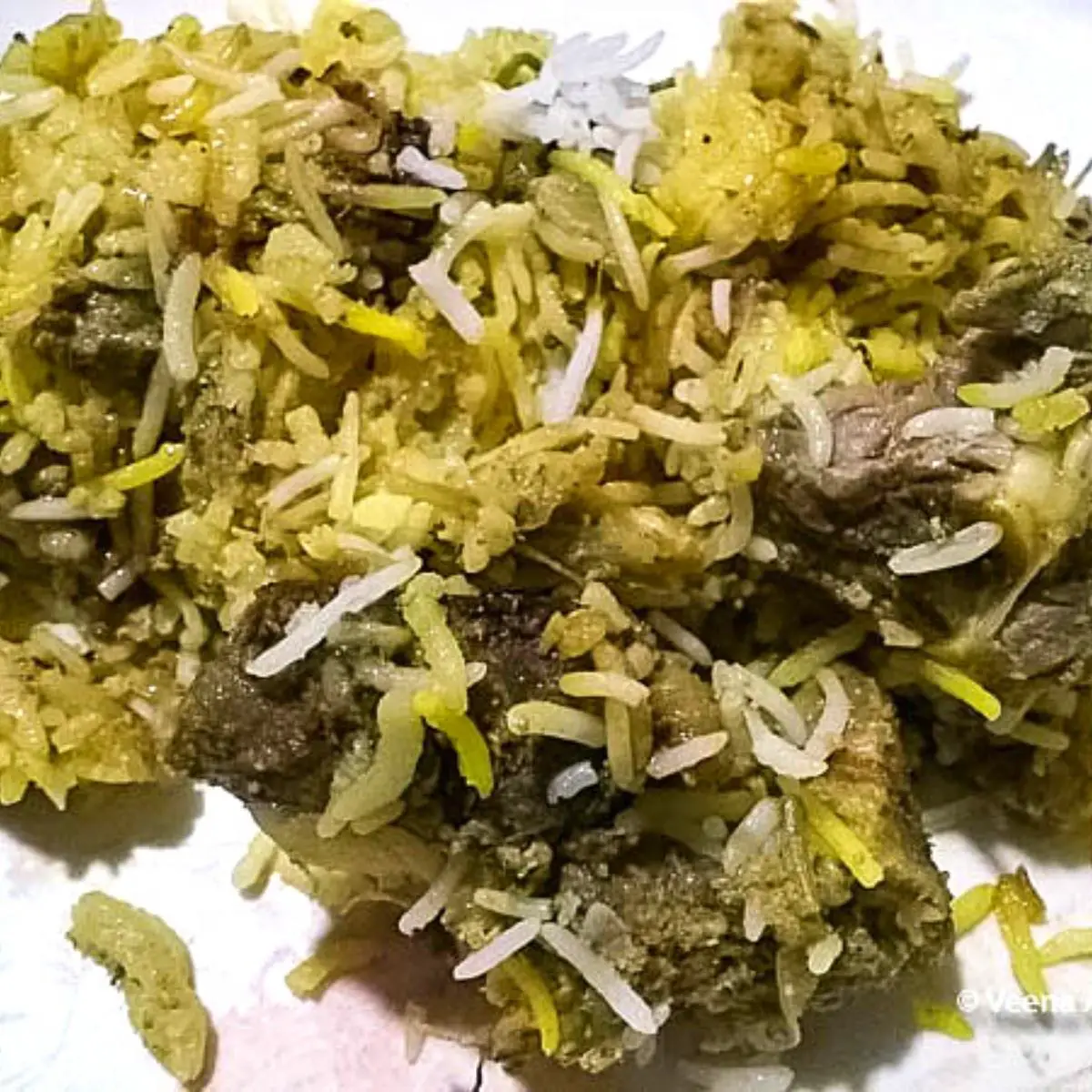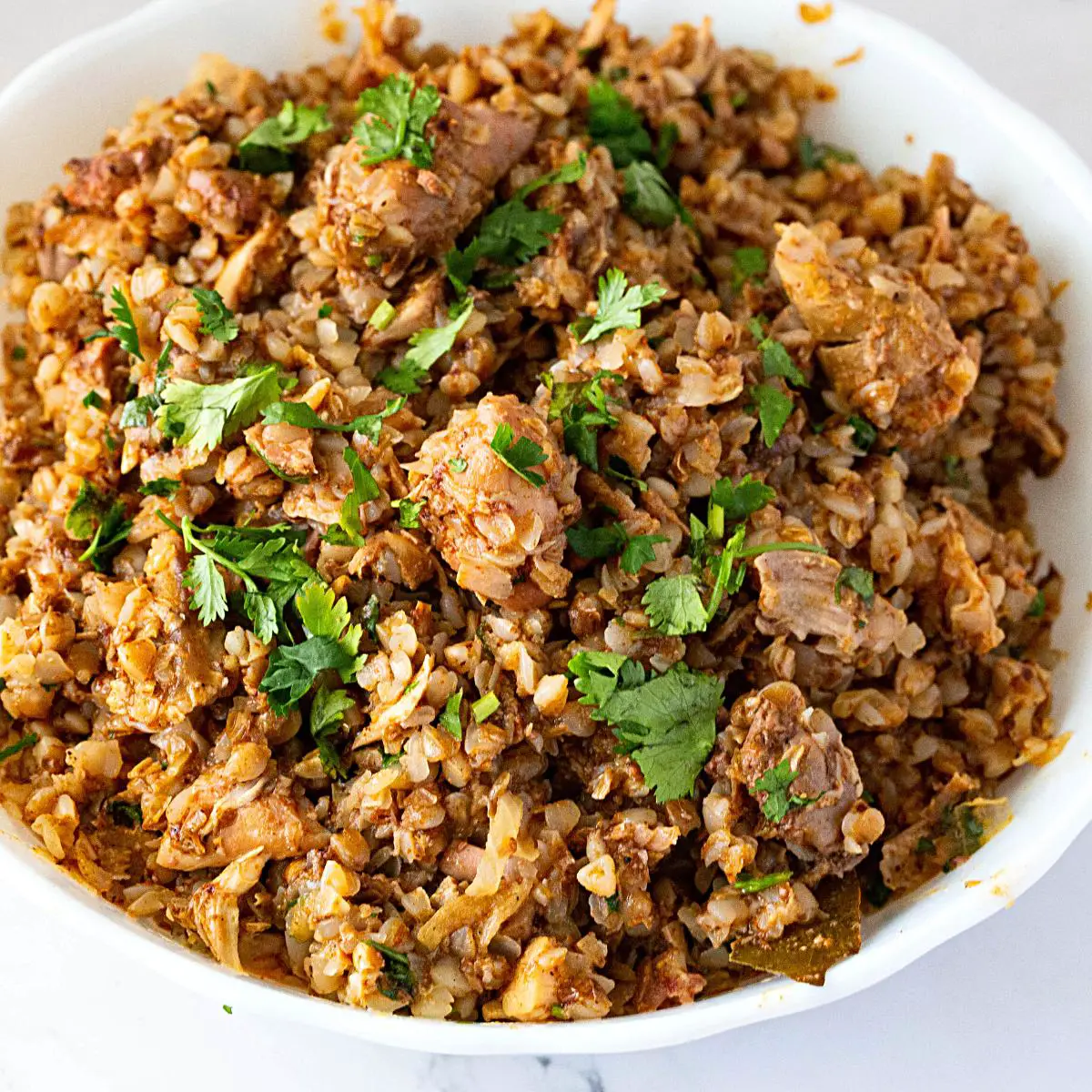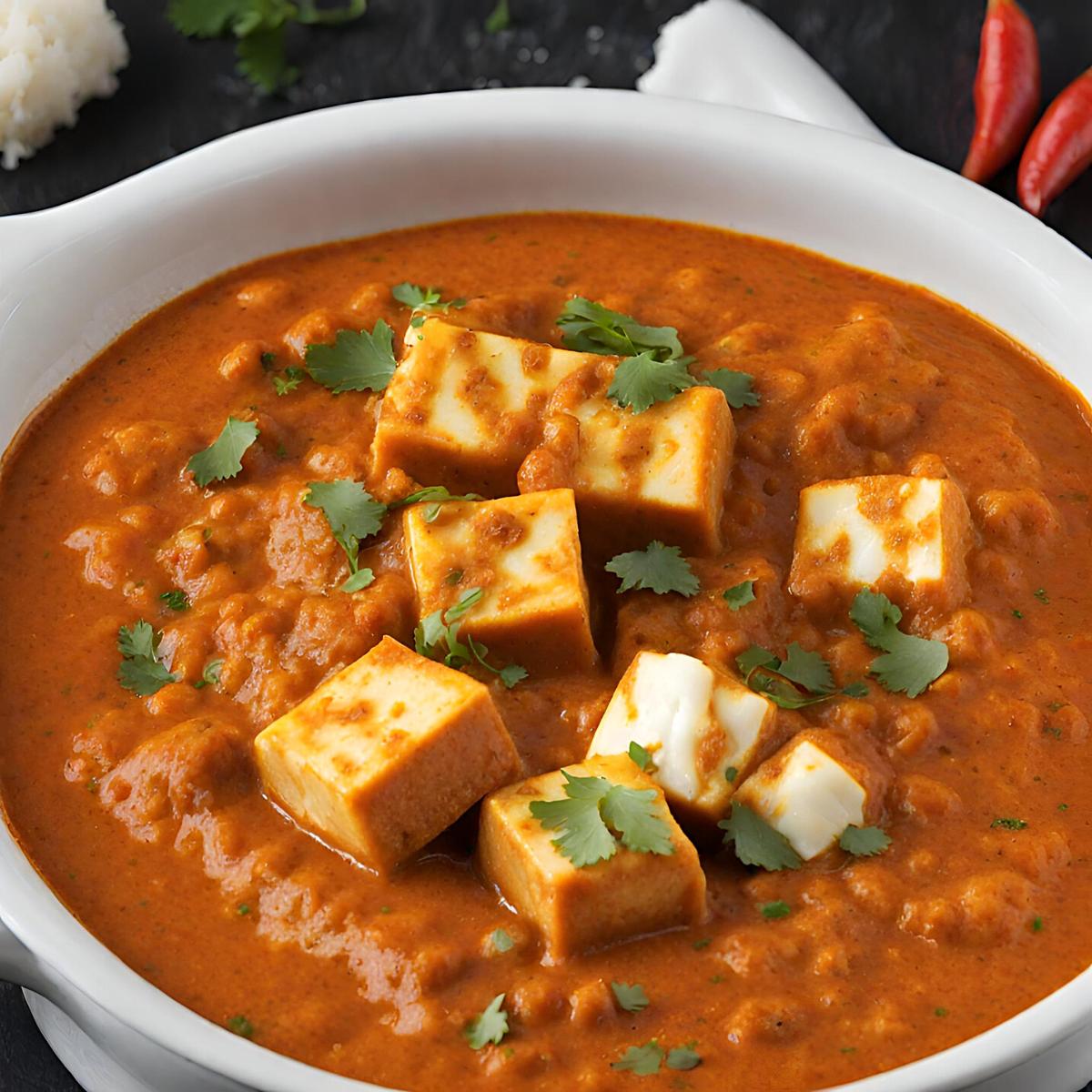Pulav – Basmati Rice Pulav
Pulav, a popular Indian rice dish, holds a special place in the hearts of many. Its fragrant spices, tender grains, and the perfect blend of flavors make it an absolute delight. However, the thought of creating this dish to perfection can be intimidating for beginners. But don’t worry, I’ve got you covered.
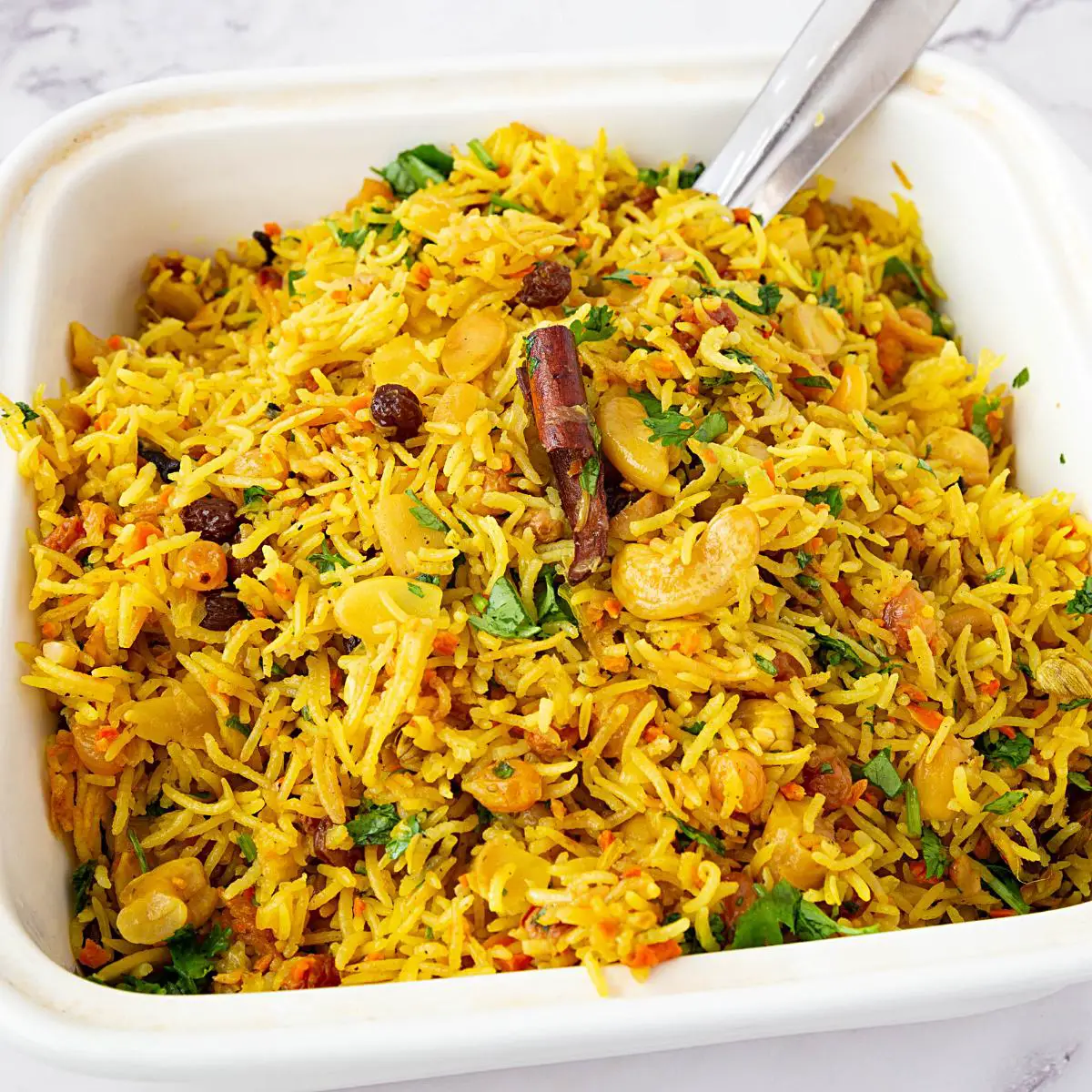
Pulav, also known as pilaf or pilau, is a flavorful one-pot meal that originated in the Middle East but has found its way into kitchens and hearts worldwide.
At its core, pulav combines long-grain rice cooked with aromatic spices, vegetables, and sometimes meat or seafood. The its beauty lies in its versatility. Whether you prefer a vegetarian version packed with veggies or a meat lover’s dream with succulent pieces of chicken or prawns, pulav allows you to unleash your creativity and tailor the dish to your taste.
Why is this basmati pulao the best recipe?
- One of the key secrets to a perfect pulav lies in the art of sautéing the spices. By gently heating them in oil or ghee, their flavors are coaxed out and infused into every grain of rice. This step allows the spices to release their full potential, creating a symphony of tastes and aromas that will transport your senses to far-off lands.
- Alongside sautéing the spices, the proper proportion of rice and water is essential to achieving pulav perfection. Each grain of rice should be tender and infused with the flavors of the dish, never mushy or clumpy. By simmering the rice and water over a gentle heat, the grains have the opportunity to absorb the flavors while maintaining their individuality. This delicate balance results in a pulav that is irresistibly aromatic and delicious.
- Not only does it add a visually pleasing element, but turmeric also boasts numerous health benefits. It is known for its anti-inflammatory properties and is believed to boost immunity, making this pulav not only a treat for your taste buds but also a nourishing choice.
- Furthermore, the fragrance and distinct flavor of basmati rice elevate this dish to new heights. Basmati rice is known for its long grains, delicate aroma, and slightly nutty taste. When combined with the spices and cooked to perfection, every mouthful of this turmeric basmati pulav offers a symphony of flavors that will transport you to the heart of India.
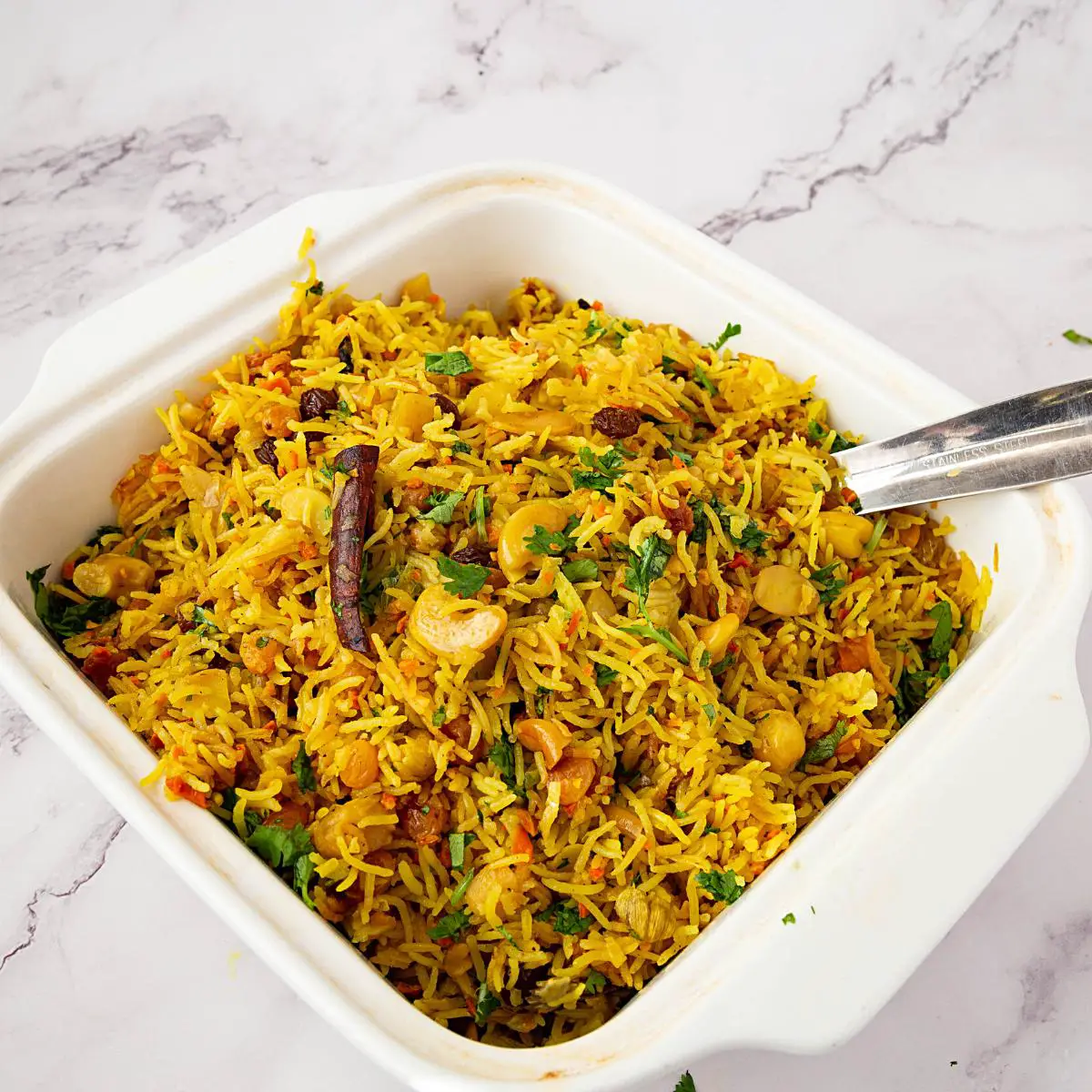
Ingredients and substitutes
- Starting with the rice, basmati is the preferred variety for its distinct aroma and flavor. However, if you don’t have basmati rice readily available, you can use other long-grain rice varieties like jasmine or even regular long-grain white rice. Although the final result may not be exactly the same, these alternatives can still create a flavorful pulav.
- Moving on to the spices, turmeric is essential for adding that vibrant yellow hue to the dish. Its earthy flavor and mild bitterness complement the other ingredients perfectly. If you don’t have turmeric on hand, you can omit it which will give you a wonderfully white rice dotted with veggies and herbs. Or try substituting it with ground cumin and paprika to achieve a similar color and flavor profile.
- Another ingredient you can add is the assortment of vegetables that add texture and freshness to the pulav. Most commonly used are peas, carrots, and bell peppers, but feel free to experiment with other vegetables like corn, green beans, or even diced potatoes. The choice of vegetables can be tailored to suit your preferences and whatever you have available in your pantry. Of course, if you are serving this along side other dishes you may choose to omit the veggies all together.
- Lastly, the garnishes and toppings can further enhance the flavors and presentation of your pulav. The recipe suggests using fresh cilantro, roasted cashews, and fried onions for that extra burst of flavor and crunch. However, if you don’t have these specific ingredients, you can try alternatives like parsley, almonds, or even crispy shallots. The key is to experiment and find the combination that suits your taste buds.
Water to rice ratio for cooking basmati
It is important to pay attention to the water-to-rice ratio when cooking basmati. This step is crucial in achieving the perfect texture and consistency that will elevate your pulav to a whole new level. While the recipe may provide a general guideline, understanding and adjusting the water-to-rice ratio to suit your preferences is key.
- To start, it’s generally recommended to use a 1:1.5 ratio of rice to water for basmati pulav. This means for every cup of rice, you should add one and a half cups of water. However, keep in mind that this ratio can vary depending on the type of basmati rice you are using and personal preferences.
- If you prefer a softer and more separate grain texture, you might want to increase the water slightly. Adding an extra quarter cup of water for every cup of rice can help achieve a fluffier end result. On the other hand, if you prefer a stickier and more compact texture, you can reduce the amount of water slightly. Subtracting a quarter cup of water for every cup of rice can help create a denser pulav.
- Experimenting with the water-to-rice ratio is part of the fun in perfecting your pulav recipe. It allows you to adjust the dish to your taste and customize it according to your preferences.
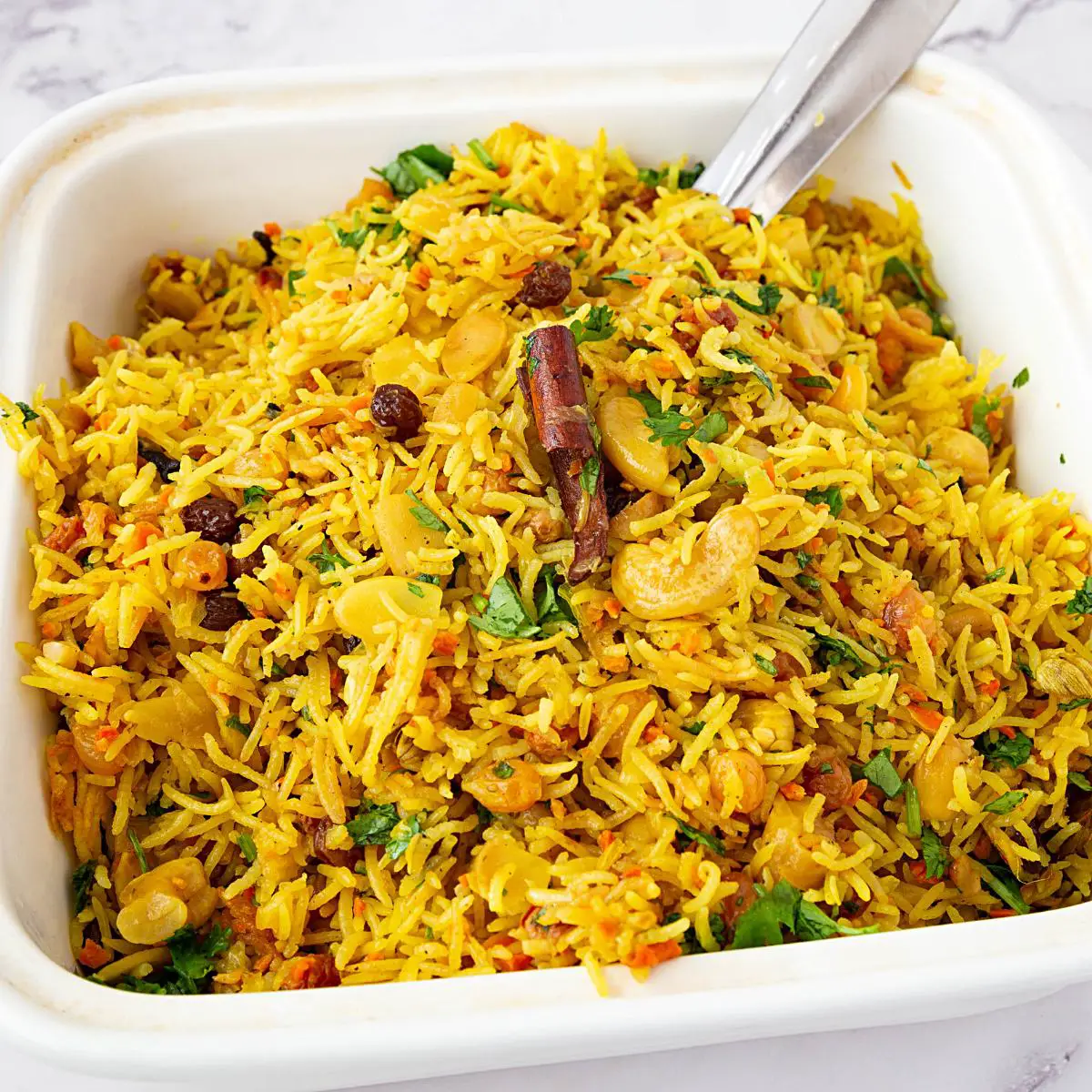
Tips for cooking perfect basmati rice
When cooking basmati rice for pulav, there are a few key tips to keep in mind.
- First and foremost, rinsing the rice before cooking is crucial. This helps remove any excess starch and ensures that the grains cook evenly and don’t stick together. To do this, simply place the rice in a sieve and rinse it under cold running water until the water runs clear.
- Next, it’s important to soak the rice for about 30 minutes before cooking. Soaking allows the grains to absorb moisture and results in a softer texture once cooked. After soaking, drain the rice thoroughly to remove any excess water before adding it to your pulav.
- When it comes to cooking the rice itself, the water-to-rice ratio plays a vital role. As a general rule, the ideal ratio for basmati rice is 1.5 cups of water for every cup of rice. However, this can vary depending on personal preference and the specific type of basmati rice you are using. Experimentation is key here, so feel free to adjust the ratio slightly to achieve your desired level of fluffiness.
- Once the water and rice are in the pot, it’s time to bring them to a boil. Start by bringing the water and rice mixture to a boil over medium-high heat, then reduce the heat to low and cover the pot with a tight-fitting lid. Let the rice simmer gently for about 15-20 minutes, or until all the water has been absorbed and the rice is tender.
- Finally, resist the temptation to peek or stir the rice while it’s cooking. Doing so can release steam and disrupt the cooking process, resulting in unevenly cooked rice. Trust the process and let the rice steam undisturbed.
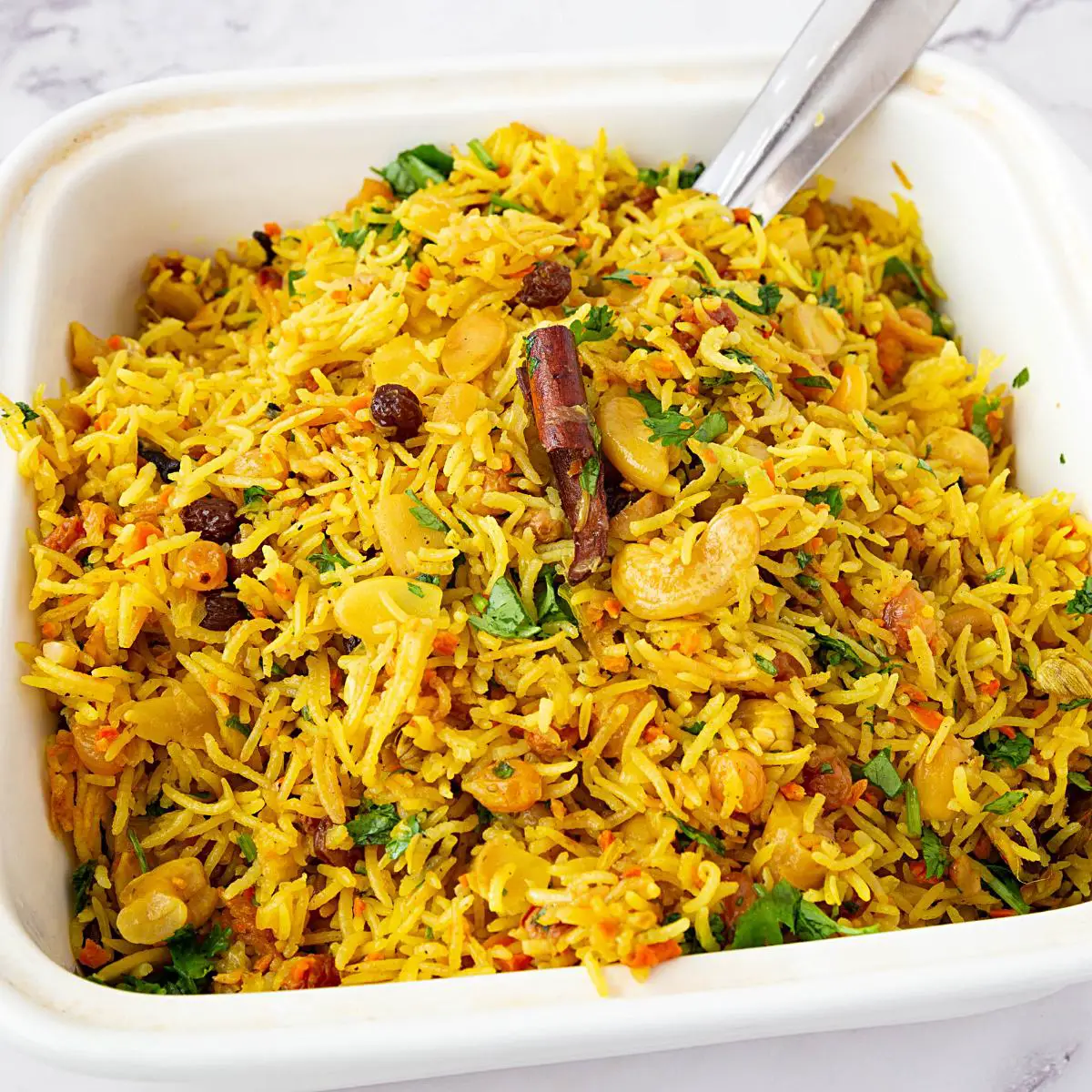
Serving suggestions
Serving suggestions for your perfect pulav are just as important as the cooking process itself. After all, presentation and pairing can elevate a simple rice dish into a memorable culinary experience.
- To start, consider garnishing your pulav with a sprinkle of fresh herbs, such as chopped cilantro or parsley, to add a vibrant touch and a burst of flavor. Not only do these herbs provide a visual appeal, but they also enhance the overall taste of the dish.
- Additionally, you can enhance the flavor profile of your pulav by serving it with a side of raita, a cooling yogurt-based condiment. The tanginess of raita helps balance out the spices and adds a refreshing element to each bite. Choose from traditional raita options like cucumber or mint, or get adventurous and experiment with flavors like pineapple or mango for a unique twist.
- For those who enjoy a bit of crunch, consider serving your pulav with some papadums or crispy fried onions. These add a contrasting texture and an extra layer of flavor to your meal. Plus, they make for an irresistible snack to munch on while savoring the aromatic rice.
- To create a complete meal, you can pair your pulav with a flavorful curry or a protein of your choice. Whether it’s a spiced chicken tikka masala, a buttery paneer tikka, or a rich vegetable korma, the combination of the pulav and the main dish will create a harmonious balance of flavors on your plate.
Frequently asked questions
While basmati rice is the traditional choice for pulav due to its fragrant and long-grain nature, you can experiment with other varieties as well. Brown rice, jasmine rice, or even a mix of different types can add their own unique flavors and textures to your pulav. Just keep in mind that the cooking time and water ratio may vary depending on the type of rice you choose.
To avoid ending up with a mushy pulav, it’s crucial to properly measure the amount of water and rice you use. Stick to the recommended ratio, usually 1:2 (1 part rice to 2 parts water), and adjust slightly based on the type of rice you are using. Additionally, it’s important to avoid overcooking the rice. Once the grains are tender yet firm, remove the pulav from the heat to prevent any further cooking.
Absolutely! One of the wonderful aspects of pulav is its versatility. While traditional recipes may call for specific ingredients like peas, carrots, or spices, feel free to substitute or add your favorite vegetables and spices to create a pulav that suits your taste buds. From bell peppers and mushrooms to cumin and turmeric, the choice is yours to make.
Yes, you can! In fact, pulav often tastes even better when it has had time to sit and allow the flavors to meld together. If you need to make it ahead of time, prepare the pulav as usual and let it cool completely. Once cooled, store it in an airtight container in the refrigerator. When ready to serve, simply reheat it gently on the stovetop or in the microwave.
Absolutely! While the classic vegetable pulav is a great starting point, there are countless variations you can explore. Some popular variations include biryani (where the rice is cooked with meat or seafood), mushroom pulav, and even dessert pulav made with ingredients like saffron and dried fruits. Don’t be afraid to get creative and experiment with different combinations to discover your personal favorite.
Pin this and other East-Indian Recipes on Pinterest here. Don’t forget to like and Follow for more recipes.
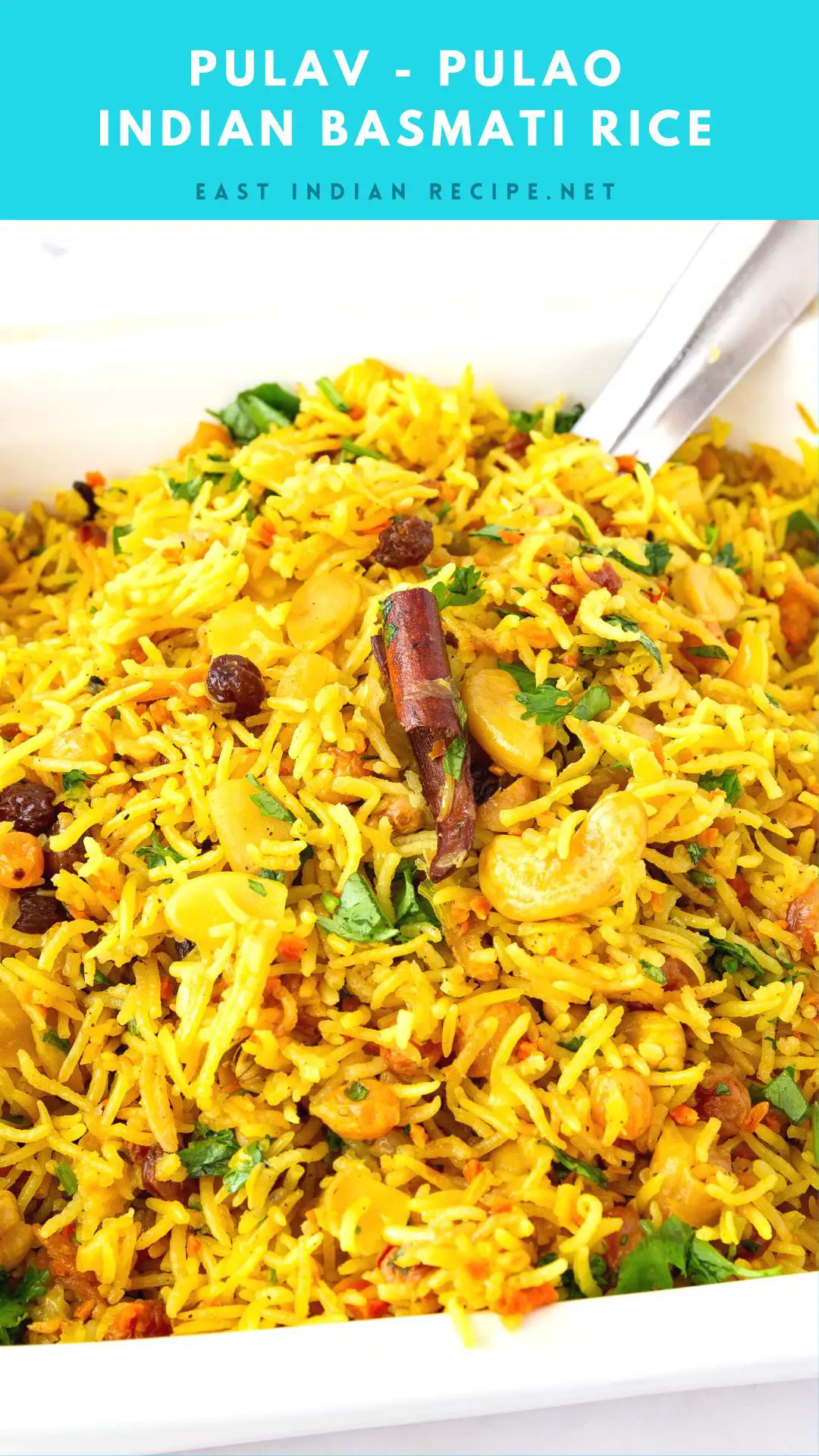
Ingredients
- 2 cups (370 g) Basmati rice
- 1 large Onion thinly sliced
- 2-3 large Garlic clvoes minced
- 1 inch Fresh ginger minced or grated
- 3 cups (700 ml) Water or vegetable/chicken broth
- 2-3 Green cardamom pods
- 1 Bay leaf
- 2-3 Cloves
- 1 inch Cinnamon stick
- ½ tsp Turmeric powder
- ½ cup Mixed nuts like cashews and almonds
- ½ cup Mixed dried fruits like raisins and sultanas
- 2 tbsp Oil or ghee
- 1 tsp Kosher salt to taste
- 2 tbsp Fresh cilantro coriander leaves, chopped – for garnish (optional)
Instructions
- Rice Preparation – Wash the Basmati rice under cold running water until the water runs clear. This removes excess starch and helps to get fluffy rice. Soak the rice in water for about 30 minutes, then drain.2 cups Basmati rice
- Frying Nuts and Fruits: Heat a tablespoon of ghee or oil in a large heavy-bottomed pan or pot. Add the mixed nuts and fry them until they're lightly golden. Remove with a slotted spoon and set aside. In the same oil/ghee, fry the dried fruits until they plump up, then remove and set aside with the nuts.½ cup Mixed nuts, ½ cup Mixed dried fruits
Pulav
- In the same pot, add another tablespoon of ghee or oil. Add the sliced onions and fry them until they turn golden brown. Add the minced garlic and ginger and sauté for another 2 minutes until fragrant.1 large Onion, 2-3 large Garlic clvoes, 1 inch Fresh ginger, 2 tbsp Oil or ghee
- Add the spices: green cardamom, bay leaf, cloves, and cinnamon stick. Sauté for a minute or two until they release their aroma. Stir in the turmeric powder and sauté for a few seconds.2-3 Green cardamom pods, 1 Bay leaf, 2-3 Cloves, 1 inch Cinnamon stick, ½ tsp Turmeric powder
- Add the soaked and drained rice to the pot. Gently stir the rice to coat it with the ghee/oil and spices, ensuring you don't break the grains. Pour in the water or broth. Add salt to taste. Mix gently.3 cups Water or vegetable/chicken broth, 1 tsp Kosher salt
- Bring the mixture to a boil, then reduce the heat to low. Cover the pot with a tight-fitting lid and let it simmer for about 15-20 minutes, or until the rice is cooked through and all the water/broth is absorbed.
- Turn off the heat and let the pulav sit for another 10 minutes. This allows the rice to steam and become fluffier.
- Gently fluff the pulav with a fork. Sprinkle the fried nuts and fruits over the top. Garnish with chopped fresh cilantro, if desired.2 tbsp Fresh cilantro
- Serve your turmeric Pulav with a side of yogurt, raita, or a curry of your choice. Enjoy!
Recipe Notes
- First and foremost, rinsing the rice before cooking is crucial. This helps remove any excess starch and ensures that the grains cook evenly and don’t stick together. To do this, simply place the rice in a sieve and rinse it under cold running water until the water runs clear.
- Next, it’s important to soak the rice for about 30 minutes before cooking. Soaking allows the grains to absorb moisture and results in a softer texture once cooked. After soaking, drain the rice thoroughly to remove any excess water before adding it to your pulav.
- When it comes to cooking the rice itself, the water-to-rice ratio plays a vital role. As a general rule, the ideal ratio for basmati rice is 1.5 cups of water for every cup of rice. However, this can vary depending on personal preference and the specific type of basmati rice you are using. Experimentation is key here, so feel free to adjust the ratio slightly to achieve your desired level of fluffiness.
- Once the water and rice are in the pot, it’s time to bring them to a boil. Start by bringing the water and rice mixture to a boil over medium-high heat, then reduce the heat to low and cover the pot with a tight-fitting lid. Let the rice simmer gently for about 15-20 minutes, or until all the water has been absorbed and the rice is tender.
- Finally, resist the temptation to peek or stir the rice while it’s cooking. Doing so can release steam and disrupt the cooking process, resulting in unevenly cooked rice. Trust the process and let the rice steam undisturbed.
About Videos – most recipes has two videos – a quick version in the post & longer detailed version on this recipe card. Please do subscribe to my channel if you like my videos
Nutrition Information
The nutrition information and metric conversion are calculated automatically. I cannot guarantee its accuracy. If this data is important to you please verify with your trusted nutrition calculator. Thank you
